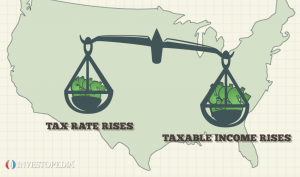
Or a board of directors may decide to use assets resulting from net income for plant expansion rather than for cash dividends. Retained earnings can typically be found on a company’s balance sheet in the shareholders’ equity section. Retained earnings are calculated through taking the beginning-period retained earnings, adding to the net income (or loss), and subtracting dividend payouts. At the end of an accounting year, the balances in a corporation’s revenue, gain, expense, and loss accounts are used to compute the year’s net income.

Every finance department knows how tedious building a budget and forecast can be. Integrating cash flow forecasts with real-time data and up-to-date budgets is a powerful tool that makes forecasting cash easier, more efficient, and shifts the focus to cash analytics. In this post we will cover retained earnings, how it is calculated, how it is used by management and some of its limitations. If the company is experiencing a net loss on their Income Statement, then the net loss is subtracted from the existing retained earnings. New customers need to sign up, get approved, and link their bank account.
Ten-Column Worksheets
Paid-in capital is the actual investment by the stockholders; retained earnings is the investment by the stockholders through earnings not yet withdrawn. When the balance in the retained earnings account is negative, this indicates that a business has generated an aggregate loss over its life. As with all aspects of accounting, accuracy is important when calculating a retained earnings statement—and as startups grow, those calculations can become more complex. For instance, many organizations have a fragmented accounting and finance framework that uses separate tools for common functions like bookkeeping, payroll, annual taxes, and financial projections. Retained earnings (RE) are funds withheld (or retained) from net income that are not paid to shareholders as dividend payouts.
This ending retained earnings balance is transferred to the balance sheet. The income statement (or profit and loss) is the first financial statement that most business owners review when they need to calculate retained earnings. This document calculates net income, which you’ll need to calculate your retained earnings balance later.
Public companies must disclose their retained earnings, and private businesses need RE statements (along with balance sheets, income statements, and other statements) to apply for funding. In basic terms, retained earnings are the historical cumulative profits minus dividends paid. For example, if an ecommerce company has a net income of $2 million with no beginning period retained earnings and paid $1 million in the form of cash dividends, the company’s RE is $1 million. In the Printing Plus case, the credit side is the higher figure at $10,240.
A corporate balance sheet includes a shareholders’ equity section, which documents the company’s retained earnings. Retained earnings can only be calculated after all of a company’s obligations have been paid, including the dividends it is paying out.. While retained earnings statements aren’t particularly insightful in the short term, your startup will still need to generate them. At the end of each accounting period, retained earnings are reported on the balance sheet as the accumulated income from the prior year (including the current year’s income), minus dividends paid to shareholders. In the next accounting cycle, the RE ending balance from the previous accounting period will now become the retained earnings beginning balance. Net income that isn’t distributed to shareholders becomes retained earnings.
Let’s say your company’s dividend policy is to pay 50 percent of its net income out to its investors. In this example, $7,500 would be paid out as dividends and subtracted from the current total. In an accounting cycle, the second financial statement that should be prepared is the Statement of Retained Earnings. This is the amount of income left in the company after dividends are paid and are often reinvested into the company or paid out to stockholders. On one hand, high retained earnings could indicate financial strength since it demonstrates a track record of profitability in previous years. On the other hand, it could be indicative of a company that should consider paying more dividends to its shareholders.
How To Calculate Retained Earnings: Important For A Startup
This represents capital that the company has made in income during its history and chose to hold onto rather than paying out dividends. Finally, there may be some accumulated gains or losses from parts of the business that don’t show up in the retained earnings account. If you had all of this other information, you could calculate a pretty good estimate of the retained earnings balance. Because profits belong to the owners, retained earnings increase the amount of equity the owners have in the business. Retained earnings are the portion of a company’s cumulative profit that is held or retained and saved for future use.
- Calculating your retained earnings balance can bring up lots of questions, so we answered the most common ones below.
- In companies that are mature, it is common for management to make regular shareholder distributions, either in the form of cash dividends or stock dividends.
- Accordingly, the normal balance isn’t an accurate measure of a company’s overall financial health.
- The main difference between retained earnings and profits is that retained earnings subtract dividend payments from a company’s profit, whereas profits do not.
- Like paid-in capital, retained earnings is a source of assets received by a corporation.
However, a debit balance in Retained Earnings is relatively rare and typically indicates financial distress. According to FASB Statement No. 16, prior period adjustments consist almost entirely of corrections of errors in previously published financial statements. Corrections of abnormal, nonrecurring errors that may have been caused by the improper use of an accounting principle or by mathematical mistakes are prior period adjustments. Normal, recurring corrections and adjustments, which follow inevitably from the use of estimates in accounting practice, are not treated as prior period adjustments. Also, mistakes corrected in the same year they occur are not prior period adjustments. It is paid out of the company’s retained earnings or free reserves and since it reduces the balance of reserves it is “Debited”.
What Is the Difference Between Retained Earnings and Dividends?
Those account balances are then transferred to the Retained Earnings account. When the year’s revenues and gains exceed the expenses and losses, the corporation will have a positive net income which causes the balance in the Retained Earnings account to increase. This balance signifies that a business has generated an aggregate profit over its life. However, the amount of the retained earnings balance could be relatively low even for a financially healthy company, since dividends are paid out from this account. Consequently, the amount of the credit balance does not necessarily indicate the relative success of a business.
First Interstate BancSystem, Inc. Reports Second Quarter Earnings – Business Wire
First Interstate BancSystem, Inc. Reports Second Quarter Earnings.
Posted: Wed, 26 Jul 2023 20:06:00 GMT [source]
Businesses can choose to accumulate earnings for use in the business or pay a portion of earnings as a dividend. Adjustments to retained earnings are made by first calculating the amount that needs adjustment. Next, the amount deducted from your retained earnings is recorded as a line item on your balance sheet. Current liabilities are debts that a company has to pay back within one year — they are often compared to current assets to determine a company’s liquidity. However, the statement of retained earnings could be considered the most junior of all the statements. Much of the information on the statement of retained earnings can be inferred from the other statements.
Management and Retained Earnings
Finally, the closing balance of the schedule links to the balance sheet. This helps complete the process of linking the 3 financial statements in Excel. A company’s equity reflects the value of the business, and the retained earnings balance is an important account within equity. To make informed decisions, you need to understand how financial statements like the balance sheet and the income statement impact retained earnings. That is why the retained earnings account shows up under the owner’s equity on the balance sheet. It’s what is left if you use the company’s assets to pay off all of the company’s liabilities.
Any such stock buy-backs might show up as a negative number on the balance sheet in an account called treasury stock. Retained earnings represents the cumulative earnings of a company that have been retained (i.e., not distributed to shareholders in the form of dividends) to reinvest in the business or pay off debt. When a company earns net income, it will credit the retained earnings account, thereby increasing its balance. Conversely, when a company incurs a net loss or declares dividends, it will debit the retained earnings account, thereby decreasing its balance. The main difference between retained earnings and profits is that retained earnings subtract dividend payments from a company’s profit, whereas profits do not. Where profits may indicate that a company has positive net income, retained earnings may show that a company has a net loss depending on the amount of dividends it paid out to shareholders.
Example of Normal Balance of Retained Earnings
Positive earnings are more commonly referred to as profits, while negative earnings are more commonly referred to as losses. The retained earnings normal balance is the money a company has after calculating its net income and dispersing dividends. The amount of retained earnings that a corporation may pay as cash dividends may be less than total retained earnings for several contractual or voluntary reasons. These contractual or voluntary restrictions or limitations on retained earnings are retained earnings appropriations. For example, a loan contract may state that part of a corporation’s $100,000 of retained earnings is not available for cash dividends until the loan is paid.
Farmers National Banc Corp. Reports Results for Second Quarter of … – Business Wire
Farmers National Banc Corp. Reports Results for Second Quarter of ….
Posted: Wed, 26 Jul 2023 12:00:00 GMT [source]
The statement of retained earnings (which is often a component of the statement of stockholders’ equity) shows how the equity (or value) of the organization has changed over a period of time. The statement of retained earnings is prepared second to determine the ending retained earnings balance for the period. The statement of retained earnings is prepared before the balance sheet because different types and formats of income statement the ending retained earnings amount is a required element of the balance sheet. The following is the Statement of Retained Earnings for Printing Plus. In some jurisdictions, incorporation laws prohibit
companies from paying dividends when there is a deficit balance in the retained
earnings account. There are accounting procedures that can be used to eliminate
the deficit.
Create a free account to unlock this Template
Retained earnings is the corporation’s past earnings that have not been distributed as dividends to its stockholders. Below is a short video explanation to help you understand the importance of retained earnings from an accounting perspective. Datarails is an enhanced data management tool that can help your team create and monitor cash flow against budgets faster and more accurately than ever before.

Dividends are a debit in the retained earnings account whether paid or not. The first item listed on the Statement of Retained Earnings should be the balance of retained earnings from the prior year, which can be found on the prior year’s balance sheet. On the balance sheet you can usually directly find what the retained earnings of the company are, but even if it doesn’t, you can use other figures to calculate the sum. This information is educational, and is not an offer to sell or a solicitation of an offer to buy any security. This information is not a recommendation to buy, hold, or sell an investment or financial product, or take any action. This information is neither individualized nor a research report, and must not serve as the basis for any investment decision.

